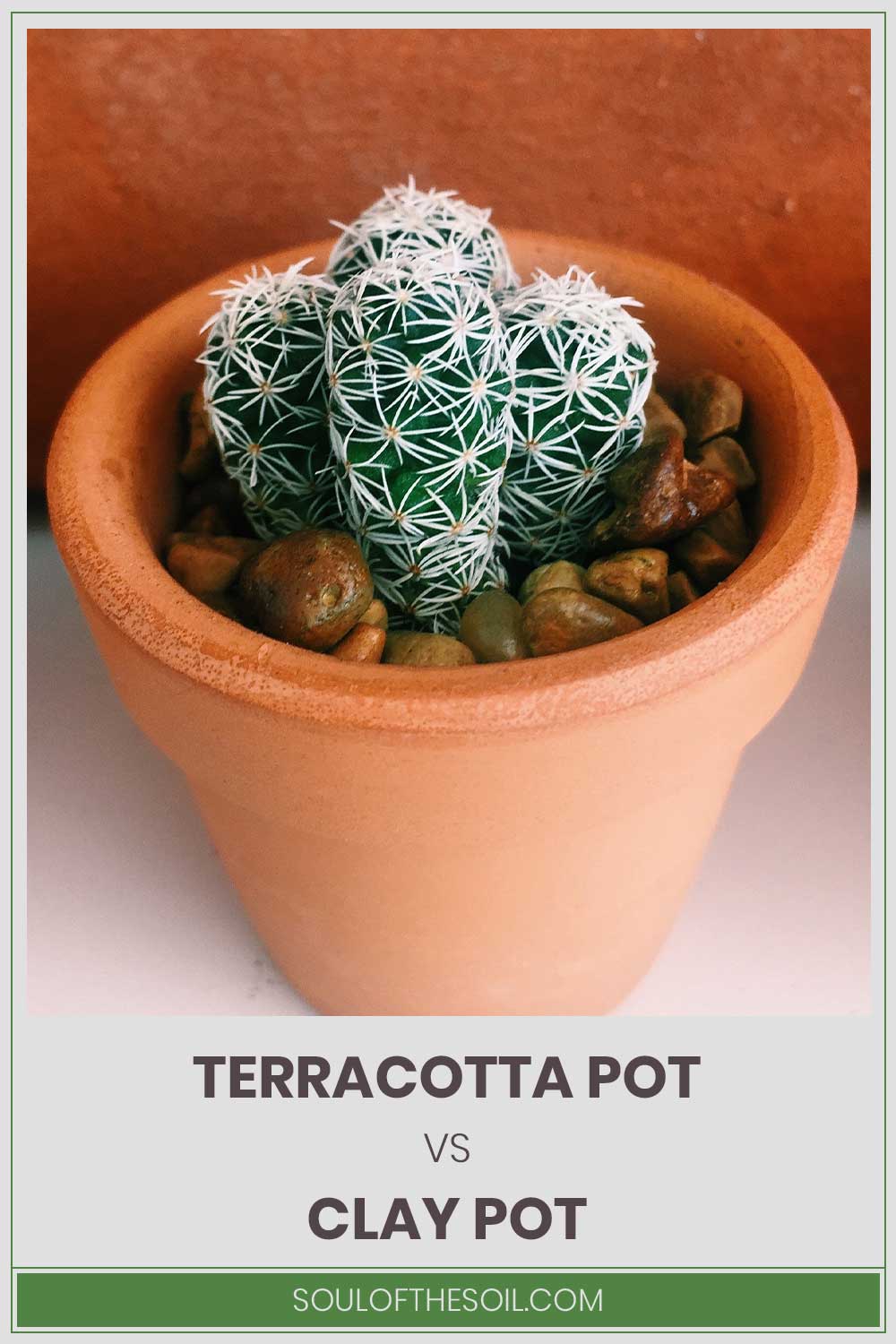Terracotta Pot vs. Clay Pot
We may earn commissions for purchases made through links on our site. Learn more on our about us page.
To get right down to the basics, there are four types of clay: Ball clay, Earthenware, Porcelain, and Stoneware clay.
To make it rather simple to distinguish between the two types of earth, all terracotta material is clay-based, but not all clay materials are composed of terracotta.
The biggest difference you will see between terracotta and other clay-based pots will be in the garden – plants will benefit from the ability of the red-clay material to absorb and maintain moisture, which benefits both heavy and low-level watering needs of plants.
Yet both will be extremely beneficial for creating a baking or cooking area, such as a pizza brick-oven design or similar.

Is there a Difference Between Clay and Terracotta Pots?
To make it simple, yes, there is a difference between different types of clay, and terracotta is one of the various types of this earthen material. That being said, terracotta is best for baking, cooking, and growing plants outside of a flower or garden bed.
There will be higher terracotta variation in usage, including roofing tiles in Eurasia and western Europe.
The word, ‘terracotta,’ comes from the Italian word for “baked earth,” and there are plenty of baked earth roof tiles along the Mediterranean to speak to the popularity of the clay.
Which is Better, Clay or Terracotta?
Each of the different types of clay will have different benefits to daily needs and tool usage. Terracotta separates itself by its utility when used for potting plants or for creating a stylish villa look with tiles for roofing.
Then you will have certain better clays for building, cooking, or water-containing items. For instance, ceramics are a combination of clay, glass, and sand which can create a lovely array of different forms of pottery and dishware.
Some of the most collectible pieces of pottery, called ‘chinaware,’ is a delicate mixture of ceramic clay.
Is Clay or Terracotta Better for Plants?
When it comes to potted plants, there is hardly any comparison to the terracotta garden pot.
The baked material holds moisture but is also aerated enough to allow air in through the pot’s pores; this elemental flow helps prevent the growth of bacteria and fungus in the soil and the insects that come along with those conditions.
The next step is to understand what sort of watering conditions the plants like. A water lily or plant that lives naturally in the water habitat might prefer ceramic or other watertight earthen-clay mixtures.
The terracotta pot will be the better bet for the majority of potted plant life available to the public.
What are the Disadvantages of Terracotta?
There are going to be a few disadvantages to using baked clay pots, the first being the risk of breakage if placed outside in colder weather. Certain conditions will cause the terracotta plant to crack when moisture is present and the temperatures are low enough.
Water-based plants that require vast amounts of water will struggle to gain enough moisture in a terracotta pot, which can be made up for with frequent watering or more savvily with a different type of pot with waterproofing.
If you live in a situation where these two things can be easily avoided, then terracotta potting plants will be your choice for planting.
What are the Disadvantages of Clay Pots?
The non-porous surface of non-terracotta pots will hold and maintain moisture inside the soil rather than pulling it out like terracotta.
This can lead to molding, fungal growth, and insects that come with an overly wet environment; this can make it hard to judge how much to water certain plants and can lead to overwatering.
Another fault of these clay pots will be the cracks and overall breakage that can occur, especially in larger made pots.
Unfortunately, very little can be done to repair this clay pot, and once a crack starts, the elements work on it until, more often than not, the end result is breakage.
Final Thoughts on Terracotta Pot vs. Clay Pot
In ninety percent of situations, a gardener will be better off using a terracotta pot. However, there are going to be a few situations that will come up, such as with water-based plant life.
Then again, if you are looking for a more decorative look, consider using a decorative layer of clay on the outer surface for a custom-styled look.
Beyond glass vases for flowers or decorative pottery, there is no reason not to rely on terracotta pots that have not let down humanity for thousands of years and will continue to do so well into the future.



Leave a Reply
You must be logged in to post a comment.